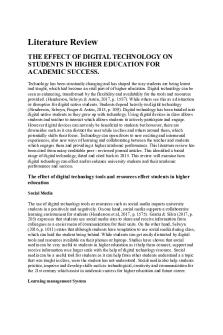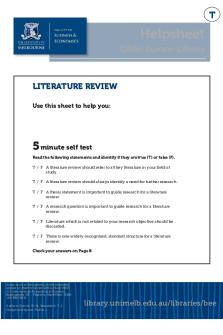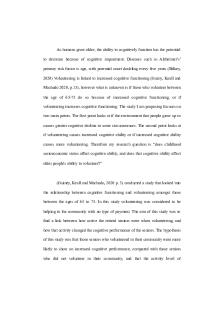Literature Review PDF

| Title | Literature Review |
|---|---|
| Course | Research Project |
| Institution | University of Surrey |
| Pages | 4 |
| File Size | 232.6 KB |
| File Type | |
| Total Downloads | 16 |
| Total Views | 140 |
Summary
Autophagy - Buruli Ulcer literature review...
Description
Buruli Ulcer, or Mycobacterium ulcerans, is an enfeeble skin disease that has been found in 33 different countries across the world since the late 40’s but has been found to be more prevalent in tropical climates.[ 1] It is most common in Western Africa but has also been reported in the Asian, South American and Australasian continents and is the third most reported mycobacterial disease following Mycobacterium tuberculosis and Mycobacterium leprae.[2] [3] The bacilli causes subcutaneous necrotic lesions in fat that first appear as small painless nodules but progress to open wounds which are susceptible to further infection and permanent disfigurement.[ 4] M. ulcerans’ mode of transmission is still not completely understood, and therefore prevention of the disease is difficult, but understanding it’s pathology, along with its virulence factor ‘mycolactone’, has been an important step in the development of treatment for this debilitating disease.[4] M. ulcerans has a 174-kbp sized virulent plasmid (pMUM001) which encodes for polyketide synthase and it’s three genes (mlsA1, mlsA2, and mlsB) to promote mycolactone production.[5] The lipid-like immunosuppressive cytotoxin mycolactone is a virulence factor of M. ulcerans and is known to cause the chronic skin ulceration that is characteristic of Buruli ulcer.[6] Mycolactone inhibits the translocation of certain proteins that travel to the Sec61 translocon on the ER for their subsequent secretion, which in-turn has a plethora of downstream effects including the degradation of proteins leading to apoptosis. Mycolactone inhibits Sec61’s ability to translocate membrane type and secretory proteins through the ER, thus cells treated with mycolactone have a reduced capability to produce secretory cytokines and membrane receptors thereby reducing the effectiveness of the innate immune response against the mycobacterium. Ogbechi et al provides evidence that prolonged mycolactone exposure is cytotoxic due to ATF4 activation and its stress-induced activation of apoptosis.[7] Mycolactone uncouples the integrated stress response from the ER. [ 7] The exotoxin induces an integrated stress response, mediated without IRE1 or ATF6 sensor activation on the ER, but instead through eIF2A phosphorylation facilitated through the action of PERK, GCN, and PKR. Subsequent to eIF2A phosphorylation, global translation is halted, and gene reprogramming takes place.[7] Phosphorylated eIF2A (p-eIFA2A) focusses on the translation of a number of mRNAs which encode for stress responses, such as ATF4 where there is a delayed re-initiation of translation with ribosomal scanning occurring via inhibitory upstream open reading frames (uORFs). uORFs in the 5’ end of ATF4 mRNAs have been shown to have a direct effect on ATF4 expression. [ 8] The more proximal uORF1 of ATF4 mRNA, comprised of just 3 amino acids in length, encourages the ribosomal scanning that occurs during stress-induced eIF2A phosphorylation by directing the scanning via uORF2, before reinitiating translation at the ATF4-coding region. uORF2 acts as an inhibitor of non-stressed cells when there are sufficient levels of eIF2-GTP, thereby blocking ATF4 expression.[8] In mycolactone-induced stress conditions, the upregulated phosphorylation of eIF2a subsequently causes a decrease in eIF2-GTP levels, thereby reducing the formation of eIF2-GTP-Met-tRNA.[8] The stress-induced reduction in the formation of this complex leads to delayed translation reinitiation, creating a window for ribosomes to avoid the inhibitory uORF2 and thereby reassociate with the eIF2-GTP-Met-tRNA complex located between uORF2 and the coding region of ATF4-mRNA.[8] Interactions between the uORF2 ‘bypassed ribosomes’ with the eIF2-GTP-Met-tRNA complex then allows the initiation of ATF4 translation and its expression, in tandem with the activation of a number of genes which facilitate cellular stress damage remediation.[7] [8] Downstream ATF4 promotes the transcription of GADD34 which then facilitates the dephosphorylation of p-eIFA2A through the action of PP1 in an ISR 1Röltgen K, Plus chke G . Buruli U lcer: His tory and D is eas e Burden. 2019 A pr 30. In: Plus chke G , Röltgen K, editors . Buruli U lcer: M ycobacterium U lcerans D is eas e [Internet]. Cham (CH): Springer; 2019. PM ID: 32091710.
2H a lB S ,H ilK ,M cK e n a cM h ,iJO g H ib e h S ,e ta l.(2 0 1 h o 4 g )e T n h icP M a e tch n ism o fth e Mycobacterium ulcerans V F ia rcu tlo e n ,cM yo la cto n e ,D e p o n cd ksa o e n B flP ro te in T ro a n silo tcah e E R .P L O S P 1 a 0 t(h 4 o )g e 1 n 0 s4 6 1 .h tp s:/d o i.rg /1 0 .3 7 1 /jo u rn a l.p a t.1 0 4 6 1
3Mosi, L., Mutoji, N. K ., B asile, F. A ., Donnell, R., Jackson , K . L., S pangenberg, T., K ishi, Y ., E nnis, D . G., & S mall, P . L. (2012). Mycobacterium ulcerans causes minimal pathogenesis and colonization in medaka (Oryzias latipes): an experimental fish model of disease transmission. Mic robes and infection, 14(9), 719–729. https://doi.org/10.1016/j.micinf.2012.02.009 B uruli ulcer [Internet].W ho.int. 2020 [cited 2 December 2020]. A vailable from: https://www.who.int/news -room/fact-sheets/detail/buruli -ulcer-(mycobacterium-ulcerans -infection) 4 5Na ka na ga K, Yots u R R , Hos hino Y, Suz uki K, M a kino M , Is hii N. B uruli ulc e r a nd myc ola ctone -producing mycobacteria. J pn J Infect Dis . 2013;66(2):83 -8. doi: 10.7883/yoken.66.83. PM ID: 23514902.
6Sa rfo FS, Phillips R , W a ns brough-J ones M , Simmonds R E. R ecent advances : role of mycolactone in the pathogenes is and monitoring of M ycobacterium ulcerans infection/B uruli ulcer dis eas e. C ell M icrobiol. 2016 J an;18(1 ):17-29. doi: 10.1111/cmi.12547. PM ID: 26572803; PM C ID: PM C 4705457. 7Ogbechi, J., H all, B.S., Sbarrato, T. et al. Inhibition of Sec61- dependent trans location by mycolactone uncouples the integrated s tres s res pons e from ER s tres s , driving cytotoxicity via trans lational activation of A TF4. C ell Death Dis 9, 397 (2018). https :/ / doi.org/ 10.1038/ s 41419- 018- 0427- y 8 Vattem KM , W ek RC. Reinitiation involving ups tream ORFs regulates A TF4 mRNA tra ns lation in mammalian cells . Proc Natl A cad Sci U S A . 2004 A ug 3;101(31):11269- 74. doi: 10.1073/ pnas .0400541101. Epub 2004 Jul 26. PM ID : 15277680; PM CID : PM C509193. 9 Qi Z, Chen L. Endopla s mic Reticulum Stres s and A utophagy. A dv ExpM ed Biol. 2019;1206:167- 177. doi: 10.1007/ 978- 981- 15- 0602- 4_ 8. PM ID : 31776985. 10 Lys tad A H, Carls s on SR, 12. Ts uboyama K, Koyama- H onda I, Sakamaki Y, Koike M , M oris hita H , M izushima N. The A TG conjugations ys tems are importantfor degradation of the innerautophagos omal membrane. Science. 2016 Nov 25;354(6315):1036- 1041. doi: 10.1126/ s cience.aaf6136. Epub 2016 Oct 20. PM ID : 27885029. 8
feedback loop. In the case of chronic stress whereby mycolactone exposure is prolonged, this same pathway can upregulate the apoptotic pathway through the activation of CHOP by ATF4.[7] Autophagy is induced my mycolactone through the activation of the ISR and the unfoldedprotein response (UPR). ATF4 activation and expression as described ameliorates autophagy-related gene expression, more specifically the expression of LC3/ATG8, Beclin-1 (ATG6) ATG3, ATG4, ATG7, ATG12, and ATG16L.[ 9] In addition, PERK/ATF4 mediated CHOP activation also upregulates Beclin-1, promoting the apoptotic pathway.[7][9] Upon ATF4 expression, ATG12 and ATG5 become upregulated and form a ubiquitin-like heterotetrameric conjugation complex with ATG16 at its N-terminal region.[ 10] The ATG12-ATG5ATG16 complex has crosstalk with an ATG8 homolog (LC3) upregulated via ATF4 expression in its own interdependent conjugation system, here it promotes it’s binding to phosphatidyl-ethanolamine (PE) at the phagophore assembly site (PAS) in the plasma membrane during the early process of autophagosome formation.[ 11][12] Interestingly, ATG12 inhibits membrane binding, ATG5 mediates it, and ATG16 activates it, creating a counterbalanced fully functioning autophagy-promoting conjugation complex. The ATG8 conjugation complex works in similarity to the ubiquitination system, whereby ATG8/LC3 takes on the role of the ubiquitin-like protein, ATG7 as E1, ATG3 as E2 and the ATG12-ATG5-ATG16 complex as the E3 ligase.[9][12] ATG7 via a thioester bond, binds to ATG8, and through the same bond is then transferred to ATG3 which links ATG8 to the membrane located PE via an amide bond, with the E3-like ATG12-ATG5-ATG16 crosstalk facilitating this process.[9][ 13] Autophagy works in tandem with the ubiquitin-proteasome system. SQSTM1 encodes for p62, a selective adaptor for autophagy upregulated by ATF4 interactions with DDIT3 (CHOP). p62 preferentially binds to K63-polyubiquitinated chains, subsequent to its oligomerisation and it’s binding to the lipidized LC3-II in the cytosol where it targets the autophagosome in its early stage ready for clearance. [ 14] p62 possesses a ubiquitin associated domain (UBA) permitting it to bind to ubiquitinated substrates and transport them to the early forming phagophore. Autophagy-related gene NBR1 binds to p62 at its PB1 domain and here it promotes the oligomerisation that facilitates LC3-II binding.[15] PERK/ATF4 mediated CHOP activation as a result mycolactone exposure has been shown to drive the apoptotic pathway through the upregulation of stress response genes. Activation of CHOP leads to the subsequent inhibition of Beclin-2 expression, a pro-survival gene. Inhibition of Beclin-2 takes place after chronic exposure to mycolactone, giving rise to a BimBeclin-1 bridge to be formed which shifts anti-apoptotic mechanisms to favour apoptosis.[7] Bibliography [1] - Röltgen K, Pluschke G. Buruli Ulcer: History and Disease Burden. 2019 Apr 30. In: Pluschke G, Röltgen K, editors. Buruli Ulcer: Mycobacterium Ulcerans Disease [Internet]. Cham (CH): Springer; 2019. PMID: 32091710. [2] - Hall BS, Hill K, McKenna M, Ogbechi J, High S, et al. (2014) The Pathogenic Mechanism of the Mycobacterium ulcerans Virulence Factor, Mycolactone, Depends on Blockade of Protein Translocation into the ER. PLOS Pathogens 10(4) e1004061. https://doi.org/10.1371/journal.ppat.1004061 [3] - Mosi, L., Mutoji, N. K., Basile, F. A., Donnell, R., Jackson, K. L., Spangenberg, T., Kishi, Y., Ennis, D. G., & Small, P. L. (2012). Mycobacterium ulcerans causes minimal pathogenesis and colonization in medaka (Oryzias latipes): an experimental fish model of disease transmission. Microbes and infection, 14(9), 719–729. https://doi.org/10.1016/j.micinf.2012.02.009 [4] - Buruli ulcer [Internet]. Who.int. 2020 [cited 2 December 2020]. Available from: https://www.who.int/news-room/factsheets/detail/buruli-ulcer-(mycobacterium-ulcerans-infection)
9 10 11 12
14
[5] - Nakanaga K, Yotsu RR, Hoshino Y, Suzuki K, Makino M, Ishii N. Buruli ulcer and mycolactone-producing mycobacteria. Jpn J Infect Dis. 2013;66(2):83-8. doi: 10.7883/yoken.66.83. PMID: 23514902.
[6] - Sarfo FS, Phillips R, Wansbrough-Jones M, Simmonds RE. Recent advances: role of mycolactone in the pathogenesis and monitoring of Mycobacterium ulcerans infection/Buruli ulcer disease. Cell Microbiol. 2016 Jan;18(1):17-29. doi: 10.1111/cmi.12547. PMID: 26572803; PMCID: PMC4705457. [7] - Ogbechi, J., Hall, B.S., Sbarrato, T. et al. Inhibition of Sec61-dependent translocation by mycolactone uncouples the integrated stress response from ER stress, driving cytotoxicity via translational activation of ATF4. Cell Death Dis 9, 397 (2018). https://doi.org/10.1038/s41419-018-0427-y [8] - Vattem KM, Wek RC. Reinitiation involving upstream ORFs regulates ATF4 mRNA translation in mammalian cells. Proc Natl Acad Sci U S A. 2004 Aug 3;101(31):11269-74. doi: 10.1073/pnas.0400541101. Epub 2004 Jul 26. PMID: 15277680; PMCID: PMC509193. [9] - Qi Z, Chen L. Endoplasmic Reticulum Stress and Autophagy. Adv Exp Med Biol. 2019;1206:167-177. doi: 10.1007/978981-15-0602-4_8. PMID: 31776985. [10] - Lystad AH, Carlsson SR, Simonsen A. Toward the function of mammalian ATG12-ATG5-ATG16L1 complex in autophagy and related processes. Autophagy. 2019 Aug;15(8):1485-1486. doi: 10.1080/15548627.2019.1618100. Epub 2019 May 23. PMID: 31122169; PMCID: PMC6613903. [11] - Otomo C, Metlagel Z, Takaesu G, Otomo T. Structure of the human ATG12~ATG5 conjugate required for LC3 lipidation in autophagy. Nat Struct Mol Biol. 2013 Jan;20(1):59-66. doi: 10.1038/nsmb.2431. Epub 2012 Dec 2. PMID: 23202584; PMCID: PMC3540207. [12].- Tsuboyama K, Koyama-Honda I, Sakamaki Y, Koike M, Morishita H, Mizushima N. The ATG conjugation systems are important for degradation of the inner autophagosomal membrane. Science. 2016 Nov 25;354(6315):1036-1041. doi: 10.1126/science.aaf6136. Epub 2016 Oct 20. PMID: 27885029. [13] - Taherbhoy AM, Tait SW, Kaiser SE, Williams AH, Deng A, Nourse A, Hammel M, Kurinov I, Rock CO, Green DR, Schulman BA. Atg8 transfer from Atg7 to Atg3: a distinctive E1-E2 architecture and mechanism in the autophagy pathway. Mol Cell. 2011 Nov 4;44(3):451-61. doi: 10.1016/j.molcel.2011.08.034. PMID: 22055190; PMCID: PMC3277881. [14] - Emanuele S, Lauricella M, D'Anneo A, Carlisi D, De Blasio A, Di Liberto D, Giuliano M. p62: Friend or Foe? Evidences for OncoJanus and NeuroJanus Roles. Int J Mol Sci. 2020 Jul 16;21(14):5029. doi: 10.3390/ijms21145029. PMID: 32708719; PMCID: PMC7404084. [15] - Kirkin V, Lamark T, Sou YS, Bjørkøy G, Nunn JL, Bruun JA, Shvets E, McEwan DG, Clausen TH, Wild P, Bilusic I, Theurillat JP, Øvervatn A, Ishii T, Elazar Z, Komatsu M, Dikic I, Johansen T. A role for NBR1 in autophagosomal degradation of ubiquitinated substrates. Mol Cell. 2009 Feb 27;33(4):505-16. doi: 10.1016/j.molcel.2009.01.020. PMID: 19250911....
Similar Free PDFs

Literature Review
- 10 Pages

Literature Review
- 9 Pages

Literature Review
- 6 Pages

Literature Review
- 32 Pages

Literature Review
- 9 Pages

Literature Review
- 5 Pages

Literature Review
- 15 Pages

Literature Review
- 4 Pages

Literature Review
- 16 Pages

Systematic Literature Review
- 9 Pages

Mobile Learning Literature Review
- 26 Pages

Literature review on IFRS
- 11 Pages

Literature Review - guidelines
- 4 Pages

Chapter-2: LITERATURE REVIEW
- 48 Pages

Distance Education Literature Review
- 12 Pages
Popular Institutions
- Tinajero National High School - Annex
- Politeknik Caltex Riau
- Yokohama City University
- SGT University
- University of Al-Qadisiyah
- Divine Word College of Vigan
- Techniek College Rotterdam
- Universidade de Santiago
- Universiti Teknologi MARA Cawangan Johor Kampus Pasir Gudang
- Poltekkes Kemenkes Yogyakarta
- Baguio City National High School
- Colegio san marcos
- preparatoria uno
- Centro de Bachillerato Tecnológico Industrial y de Servicios No. 107
- Dalian Maritime University
- Quang Trung Secondary School
- Colegio Tecnológico en Informática
- Corporación Regional de Educación Superior
- Grupo CEDVA
- Dar Al Uloom University
- Centro de Estudios Preuniversitarios de la Universidad Nacional de Ingeniería
- 上智大学
- Aakash International School, Nuna Majara
- San Felipe Neri Catholic School
- Kang Chiao International School - New Taipei City
- Misamis Occidental National High School
- Institución Educativa Escuela Normal Juan Ladrilleros
- Kolehiyo ng Pantukan
- Batanes State College
- Instituto Continental
- Sekolah Menengah Kejuruan Kesehatan Kaltara (Tarakan)
- Colegio de La Inmaculada Concepcion - Cebu
